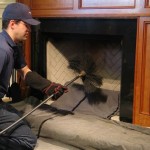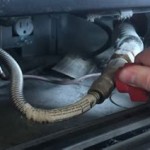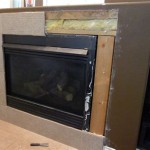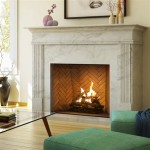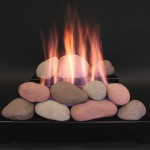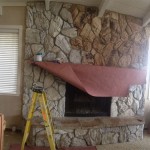Gas Fireplace Installation: A Comprehensive Guide
Gas fireplaces offer an efficient and aesthetically pleasing alternative to traditional wood-burning fireplaces. They provide consistent heat, require minimal maintenance, and offer convenient operation at the flip of a switch or the press of a button. However, the installation of a gas fireplace is a complex process that requires careful planning, adherence to safety regulations, and, in most jurisdictions, professional expertise. This article provides a comprehensive overview of the key considerations involved in gas fireplace installation.
Planning and Preparation: Assessing the Site and Choosing the Right Fireplace
The initial phase of gas fireplace installation involves meticulous planning and preparation. This includes a thorough assessment of the installation site and selecting a fireplace that meets both functional requirements and aesthetic preferences. The feasibility of installation is contingent upon several factors, including the availability of a gas line, the structural integrity of the existing space, and compliance with local building codes.
First, the presence of an existing gas line is crucial. If a gas line is not already present, it will need to be installed, which adds to the overall cost and complexity of the project. The capacity of the existing gas line also needs to be evaluated to ensure it can adequately supply the fireplace. This often requires consultation with a qualified gas technician who can perform a pressure test and assess the gas line's BTU (British Thermal Unit) capacity. If the existing gas line is insufficient, it might need to be upgraded or a new line installed from the gas meter.
Secondly, the structural integrity of the proposed installation site must be examined. The fireplace, particularly if it's a large or heavy model, will require adequate support. This may involve reinforcing the floor or wall, or constructing a platform to bear the weight. A structural engineer may need to be consulted to assess the load-bearing capacity and recommend necessary modifications.
Thirdly, adherence to local building codes and regulations is paramount. These codes dictate specific requirements for gas fireplace installation, including venting requirements, clearance distances from combustible materials, and carbon monoxide detector placement. Failure to comply with these codes can result in fines, required rework, and potential safety hazards. Consulting with the local building department before beginning the installation process is strongly recommended.
Choosing the right gas fireplace involves considering several factors, including the desired heat output, the size and style of the fireplace, and the type of venting required. Gas fireplaces are available in a variety of styles, including traditional, contemporary, and linear models. They also come in different sizes and BTU ratings, allowing homeowners to select a fireplace that meets their specific heating needs.
Venting options include direct vent, vent-free, and B-vent systems. Direct vent fireplaces draw combustion air from outside and vent exhaust gases directly outside, making them the safest and most efficient option. Vent-free fireplaces do not require venting, but they are not permitted in all jurisdictions and can potentially lead to indoor air quality issues. B-vent fireplaces use existing chimneys or dedicated vent pipes to exhaust combustion gases.
The Installation Process: Gas Line Connection, Venting, and Electrical Hookup
Once the planning and preparation phase is complete, the actual installation process can begin. This involves connecting the gas line, installing the venting system, and completing the electrical hookup. Each of these steps requires careful attention to detail and adherence to safety protocols.
Connecting the gas line is arguably the most critical step in the installation process. This should only be performed by a qualified gas technician or plumber with the necessary licenses and certifications. The gas line must be properly sized and connected to the fireplace using appropriate fittings and sealant. A gas shut-off valve should be installed near the fireplace to allow for easy shut-off in case of emergencies. After the gas line is connected, a leak test must be performed to ensure there are no gas leaks. This is typically done using a gas leak detector or a soap and water solution.
The installation of the venting system is equally important. The type of venting system used will depend on the type of fireplace selected. Direct vent fireplaces require a specific type of venting pipe that is designed to withstand high temperatures and prevent gas leaks. The venting pipe must be properly sealed and installed according to the manufacturer's instructions. B-vent fireplaces require a vent pipe that connects to an existing chimney or a dedicated vent pipe. The chimney or vent pipe must be inspected to ensure it is in good condition and free of obstructions.
Many gas fireplaces require an electrical hookup to power the ignition system, blower fan, or remote control. The electrical wiring should be performed by a qualified electrician who is familiar with local electrical codes. The fireplace should be connected to a dedicated electrical circuit with the appropriate amperage rating. A ground fault circuit interrupter (GFCI) outlet should be used to protect against electrical shock.
After the gas line, venting, and electrical connections are complete, the fireplace can be installed in its final location. The fireplace should be secured to the floor or wall according to the manufacturer's instructions. A non-combustible material, such as brick or stone, should be used to surround the fireplace to provide a safe and aesthetically pleasing finish.
Safety and Maintenance: Ensuring Safe Operation and Long-Term Performance
After the gas fireplace is installed, it is essential to prioritize safety and maintenance to ensure its safe operation and long-term performance. This includes proper ventilation, regular inspections, and adherence to manufacturer's recommendations.
Proper ventilation is crucial for preventing carbon monoxide buildup. Carbon monoxide is a colorless, odorless gas that can be deadly. All gas fireplaces should be equipped with a carbon monoxide detector, preferably one with a digital display that shows the carbon monoxide level in the air. The carbon monoxide detector should be placed near the fireplace and tested regularly to ensure it is functioning correctly. The batteries should be replaced annually or as needed.
Regular inspections of the gas fireplace are essential for identifying potential problems before they become serious. The fireplace should be inspected annually by a qualified technician who can check the gas line, venting system, and electrical connections. The technician should also clean the burners and check the pilot light to ensure it is burning properly. Any damaged or worn parts should be replaced promptly.
Adhering to the manufacturer's recommendations is also important for ensuring the safe operation and long-term performance of the gas fireplace. The manufacturer's manual contains valuable information about the proper use and maintenance of the fireplace. Homeowners should read the manual carefully and follow all instructions. The manual also provides information about the types of fuel that can be used in the fireplace. Using the wrong type of fuel can damage the fireplace and create a safety hazard.
In addition to these measures, homeowners should also be aware of the signs of carbon monoxide poisoning. These signs include headache, dizziness, nausea, vomiting, and confusion. If anyone experiences these symptoms, they should immediately evacuate the premises and seek medical attention. Contacting the local fire department or gas company is also advisable.
Maintaining a clean fireplace is also important. Regularly cleaning the glass front of the fireplace will improve its appearance and prevent soot buildup. The area around the fireplace should be kept clear of combustible materials, such as curtains, furniture, and paper. Children and pets should be supervised when the fireplace is in operation.
Finally, it's important to understand the warranty coverage provided by the fireplace manufacturer. Knowing the terms and conditions of the warranty will help ensure that any necessary repairs or replacements are covered. Keeping records of maintenance checks and repairs can also be helpful in the event of a warranty claim.
By following these guidelines, homeowners can ensure that their gas fireplace is installed and operated safely and efficiently for many years to come. Remember to prioritize safety above all else and to consult with qualified professionals when necessary.

How To Install A Gas Fireplace Corner Insert

How To Install A Fireplace Insert Diy Save Money

Fireplace Installations Near Dc Chimney Experts

Convert To Gas Installing Fireplace Inserts Doctor Flue

If You Have A Gas Fireplace It May Or Not Chimney Flue

Efficient Prefab Gas Fireplaces Fireplace Showroom In Tilton Nh

How To Select And Install A Gas Fireplace Log Set Fireplaces Direct Learning Center

7 Benefits Of Installing A Gas Fireplace Low Maintenance Much More

Install A Propane Gas Fireplace Insert Vent Free 2

Gas Fireplace Installation Can I Do It Myself
Related Posts


